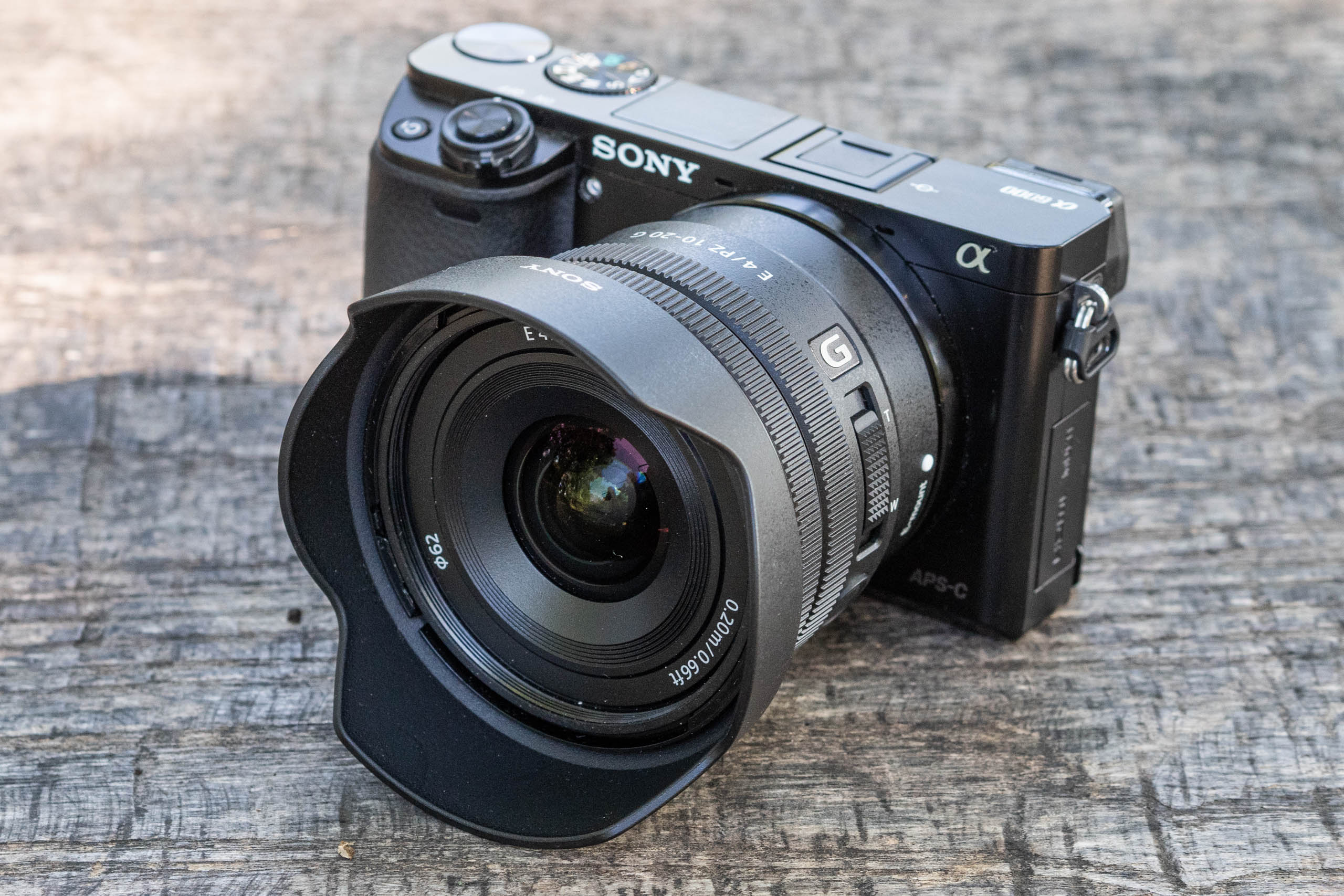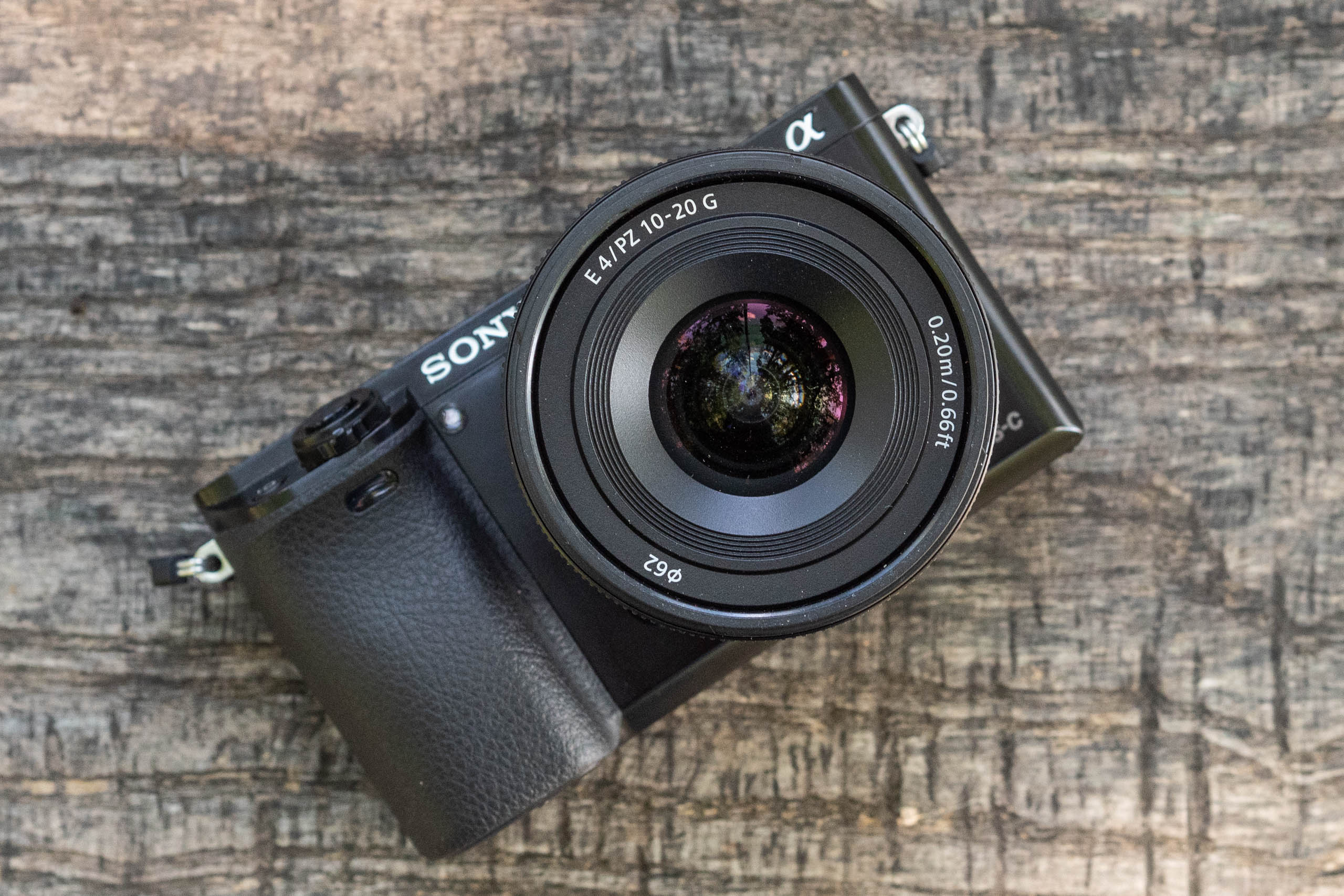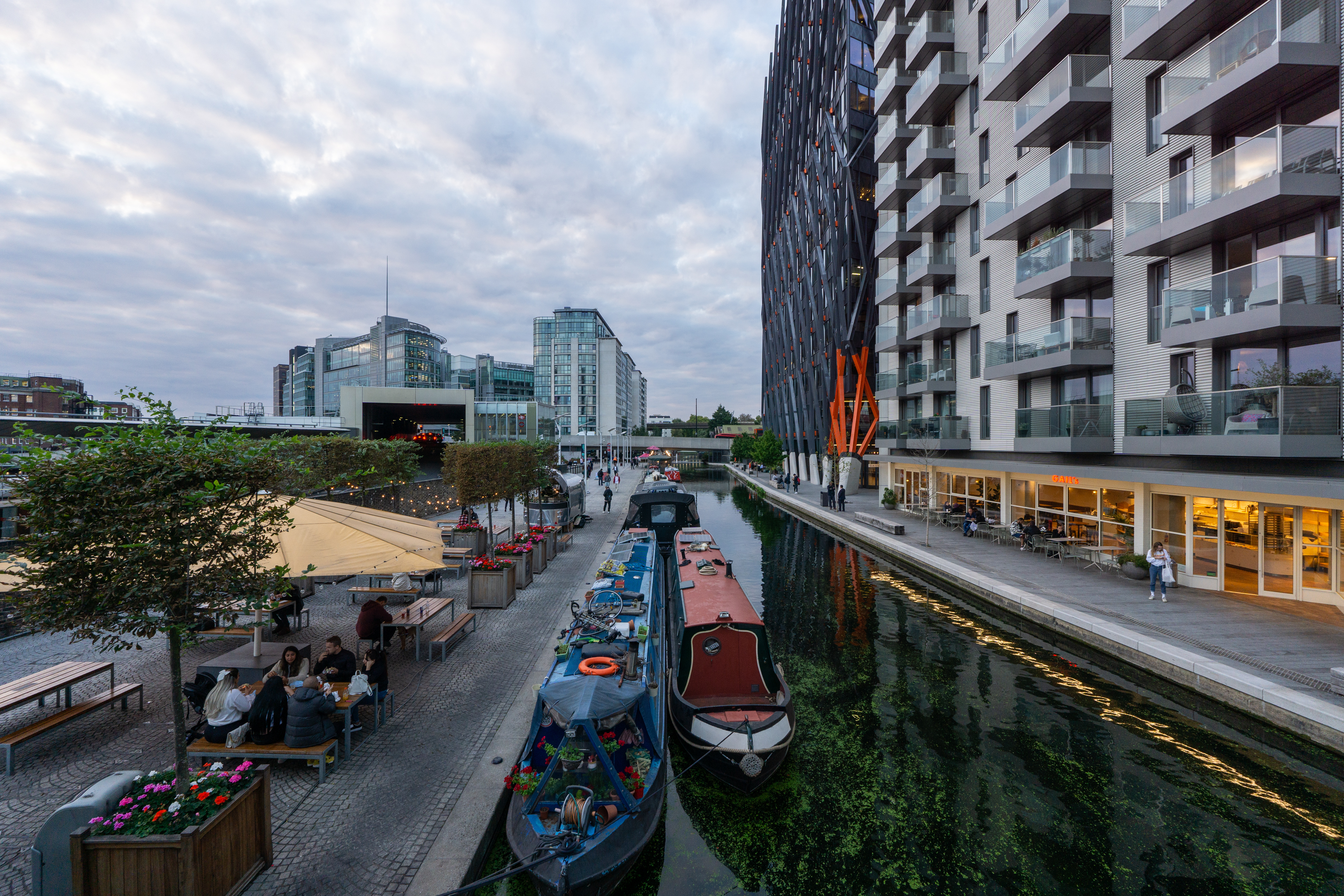The Sony E PZ 10-20mm F4 G is an ultra-wideangle zoom for APS-C mirrorless cameras, on which it offers a zoom range equivalent to a 15-30mm lens on full-frame. This expansive field of view should make it attractive for such subjects as landscapes and architecture. The ‘PZ’ designation indicates that it uses a powered, rather than mechanical zoom design, which makes it particularly well-suited for video work. It costs £750.
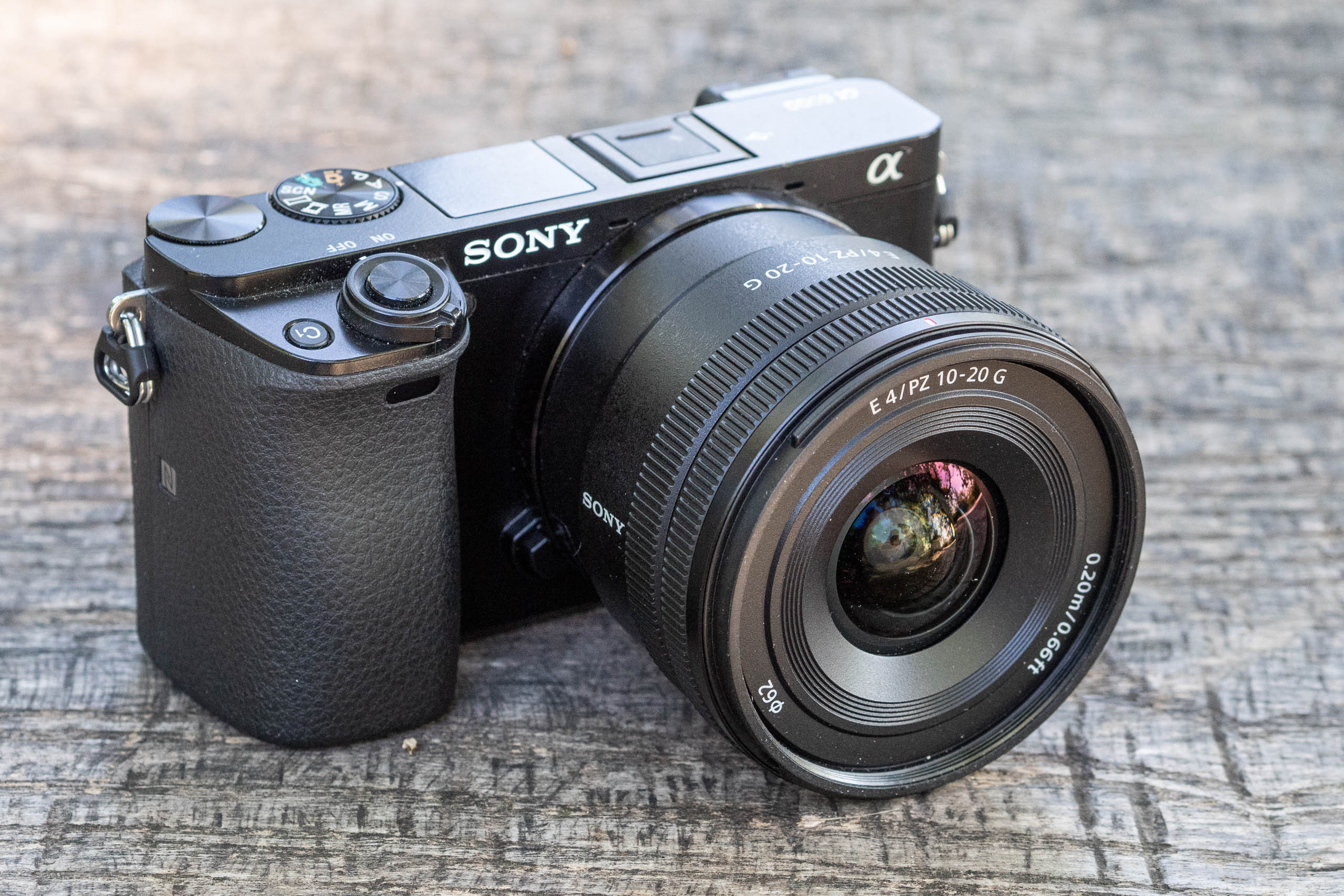
The E PZ 10-20mm F4 G is designed for use on Sony’s APS-C mirrorless cameras such as the Alpha 6000. Image credit: Andy Westlake / Amateur Photographer
Sony already has an APS-C wideangle zoom in its line-up, the E 10-18mm F4 OSS, which dates from 2012 and costs £629. In comparison, the older optic is slightly larger and heavier, uses a traditional mechanical zoom, and includes optical image stabilisation. But unlike the new lens, it doesn’t benefit from weather-sealed construction.
The closest thing to a third-party alternative is the Tamron 11-20mm F/2.8 Di III-A RXD (£819), which offers a stop larger maximum aperture, but is considerably larger and heavier in return.
If the E PZ 10-20mm F4 G looks familiar, that may be because it bears a strong family resemblance to the full-frame Sony FE PZ 16-35mm F4 G, just shrunken down for the smaller sensor format. I was impressed by the 16-35mm when I reviewed it earlier this year, so let’s see whether the 10-20mm follows suit.
Sony E PZ 10-20mm F4 G: Features
Sony has constructed the 10-20mm f/4 using an optical design of 11 elements in 8 groups, including two made from extra-low dispersion (ED) glass to minimise chromatic aberration. There are also three aspherical elements and an aspherical ED glass element to suppress field curvature and astigmatism, with the aim of giving sharp images across the entire frame.
Both zooming and focusing are electronically driven, rather than mechanical, which brings a raft of desirable features for video. Sony says that focus breathing is minimised – in other words, there’s minimal change in angle of view between the infinity setting and the minimum focus distance, which ranges from 13cm at the 10mm setting, to 17cm at 20mm.
Likewise, the lens should hold focus on the subject when zooming, and the composition should stay properly centred. Both zooming and focusing are internal, which means that the lens’s length and balance stays constant, making it ideal for shooting on a gimbal.

The barrel boasts weather sealed construction, including a seal around the lens mount. Image credit: Andy Westlake / Amateur Photographer
As already mentioned, the lens boasts dust and moisture resistant construction, thanks to a series of seals around the mount, front element, and the various control points. It comes with a petal-shaped, bayonet mount lens hood that can be reversed for storage, although in this position, the hood blocks the manual focus ring. Despite its broad angle of view, the lens accepts 62mm filters.

Sony E PZ 10-20mm F4 G packed for storage, with lens caps and hood reversed. Image credit: Andy Westlake / Amateur Photographer
While the Sony E PZ 10-20mm F4 G is designed for APS-C cameras, it can also be used on full-frame models such as the Sony Alpha 7 series. It’ll automatically engage APS-C/Super 35mm crop mode and shoot stills at a correspondingly reduced resolution. If you manually switch the camera back to full-frame recording, then unsurprisingly you’ll find that the optics don’t come close to covering the entire sensor area at any focal length.
Sony E PZ 10-20mm F4 G: Build and Handling
At 70mm in diameter, 50mm in length, and 178g, the 10-20mm f/4 is strikingly small and light. In fact, it’s 9mm shorter and 47g lighter than is 10-18mm stablemate, which itself isn’t exactly huge. Compared to the full-frame FE PZ 16-35mm F4, it’s about half the weight, emphasising the portability advantage of the APS-C sensor format.

The lens is strikingly compact and lightweight, making it a good match for Sony’s small APS-C cameras. Image credit: Andy Westlake / Amateur Photographer
This means that it makes a well-balanced companion to Sony’s small A6000-series cameras, which can easily be overwhelmed by even moderately large lenses. I tested it mostly on the 24MP Sony Alpha 6000 and found it was an agreeable fit to the compact rangefinder-style body. I also used it with the heftier SLR-shaped Sony Alpha 7R IV, on which I barely even noticed its presence. Likewise, it’s a very agreeable fit on the Sony FX30 cinema camera.
While the 10-20mm lacks the aperture ring found on its full-frame counterpart, it otherwise boasts much the same set of controls. Along with zoom and focus rings placed towards the front of the barrel, it has a sliding zoom lever on the side, a physical AF/MF switch, and an AF stop button whose function can be customised from the camera body.
Like on the FE PZ 16-35mm F4, the powerzoom works strikingly well. The zoom ring is highly responsive and intuitive in operation; you can make large changes with a quick twist, and then precisely fine-tune your composition with smaller, slower movements.
It’s not quite the same as using a mechanical zoom, as there are neither focal length markings nor hard end stops to the travel, but it’s in no way worse. This stands in welcome contrast to some other power zoom controls, which can often be overly twitchy in operation.
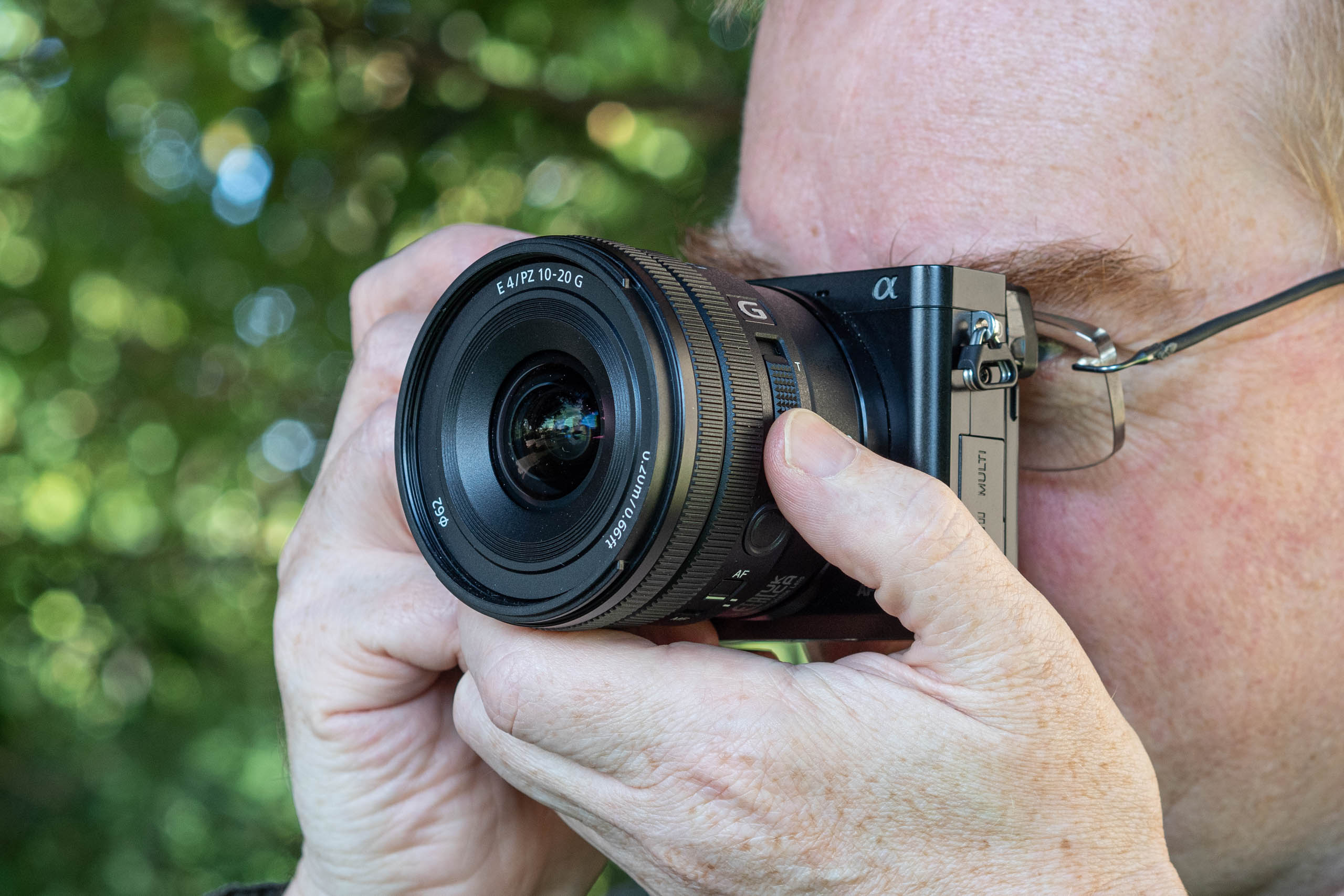
The zoom lever is perfectly placed for operation by your left thumb. Image credit: Andy Westlake / Amateur Photographer
Sony has also included a zoom lever on the side of the barrel, with a proportional action that facilitates highly controlled zooming during video recording. Nudge it slightly off-centre, and the lens will zoom very slowly; push it to its furthest extreme, and it’ll zoom from one end of the range to the other in about a second.
If this isn’t good enough, with certain cameras it’s also possible to zoom using either a lever or custom buttons on the body, or via a Bluetooth remote control.
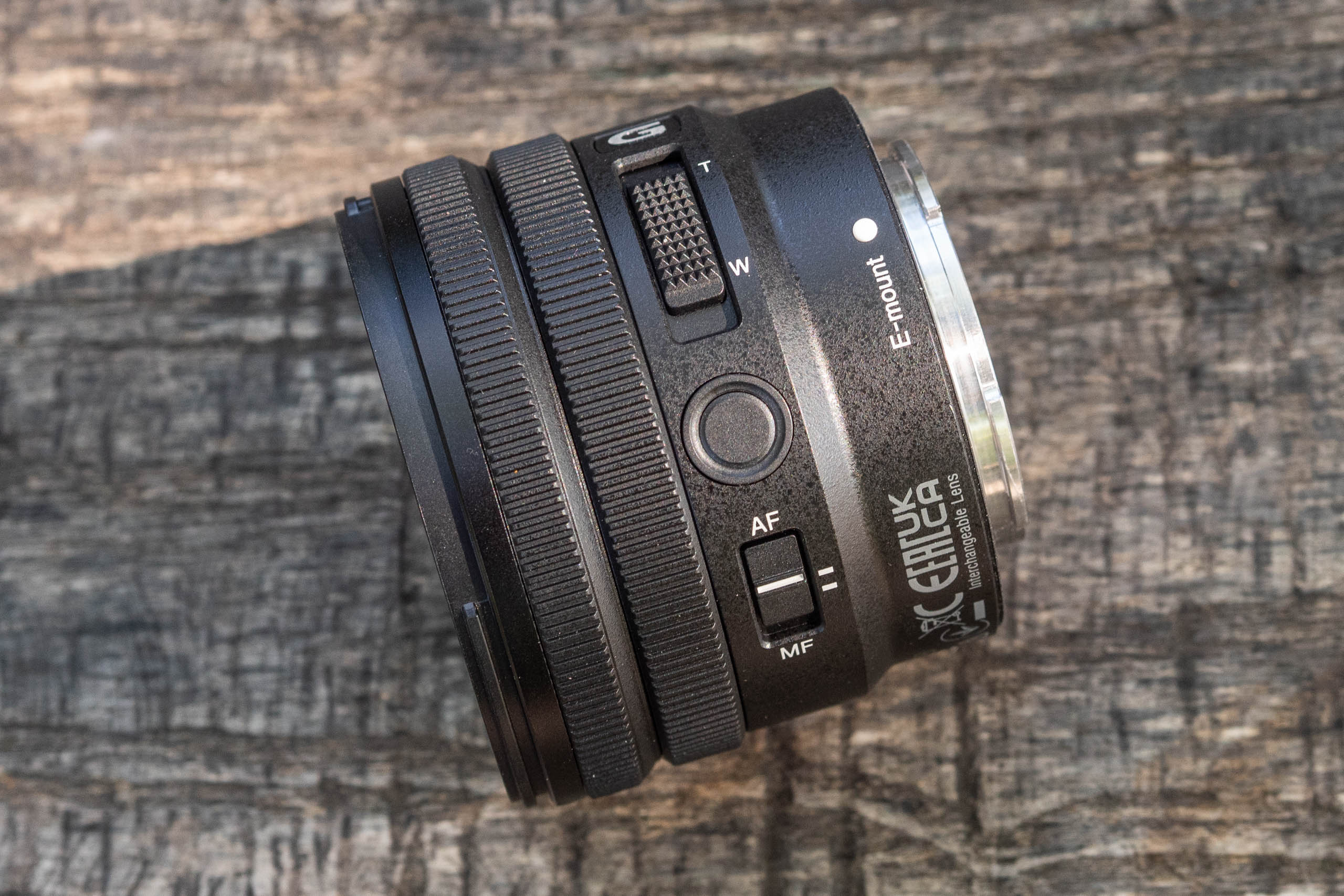
The zoom and focus rings are similar in both texture and diameter, making the easily confused. Image credit: Andy Westlake / Amateur Photographer
If there’s one drawback of the lens’s compact size, though, it’s the fact that the zoom and focus rings are physically very close together and, unlike on the 16-35mm, almost the same diameter. They also have the same texture and near-identical torque, meaning it’s difficult to tell them apart with the camera up to your eye. I found it all too easy to twist the wrong one by mistake.
Sony E PZ 10-20mm F4 G: Autofocus
Sony has employed two linear motors to drive the lens’s focusing system, in both auto and manual modes. Autofocus is very quick, at least in good light, and essentially silent. The latter is invaluable for video, and even when testing in a very quiet room, I didn’t register any operational noises on my soundtrack. My tests also confirmed that, as promised, the lens suffers from minimal focus breathing, with no apparent focus drift on zooming, either.
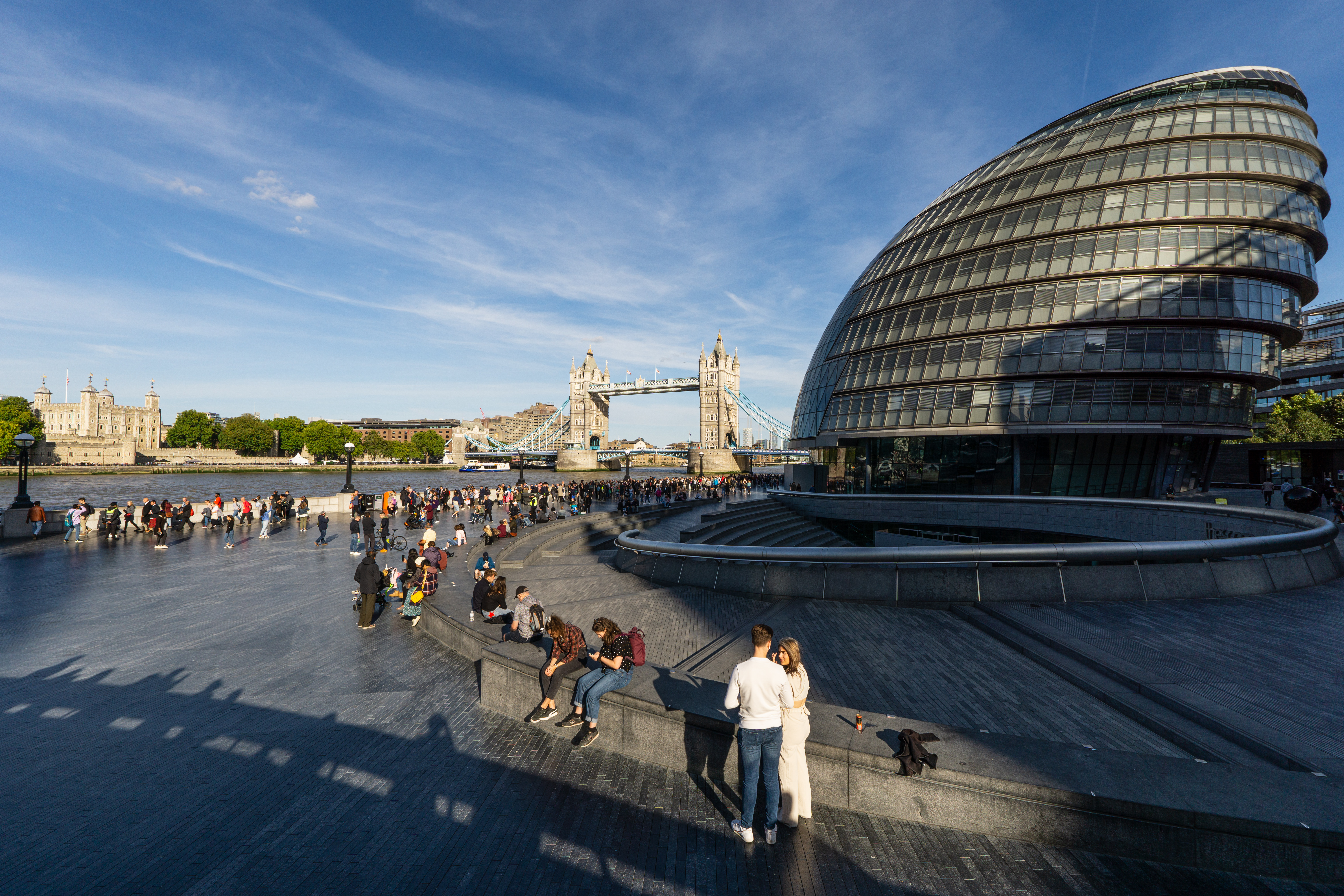
Sony E PZ 16-35mm F4 Tower Bridge ultra-wide sample image. Sony Alpha 6000, 10mm, 1/320sec at f/8, ISO 100. Image credit: Andy Westlake
You can see this in the video below. Initially the lens holds focus on zooming from wideangle to telephoto, with a slow, controlled zoom via the lever on the side. It then holds its angle of view on shifting focus from close distance to afar (manual focus pull using a Bluetooth remote control). The lens is then zoomed back out using the lever, more rapidly than the previous zoom in, before the focus is pulled back to the foreground.
On the rare occasions you may need to switch to manual focus, the lens performs flawlessly. Flick the switch to MF and nudge the focus ring, and it’ll automatically engage magnified view for making precise adjustments. Thanks to Sony’s Linear Response MF, manual focus operates every bit as intuitively as the zoom control.
Sony E PZ 10-20mm F4 G: Performance
With the E PZ 10-20mm F4 G, Sony has adopted the same design approach as with its 16-35mm sibling. Technically, this means that the optics accept a high level of barrel distortion at wideangle, in exchange for minimising other aberrations. This distortion is then automatically corrected in-camera (you can’t turn off the software compensation in the menu).
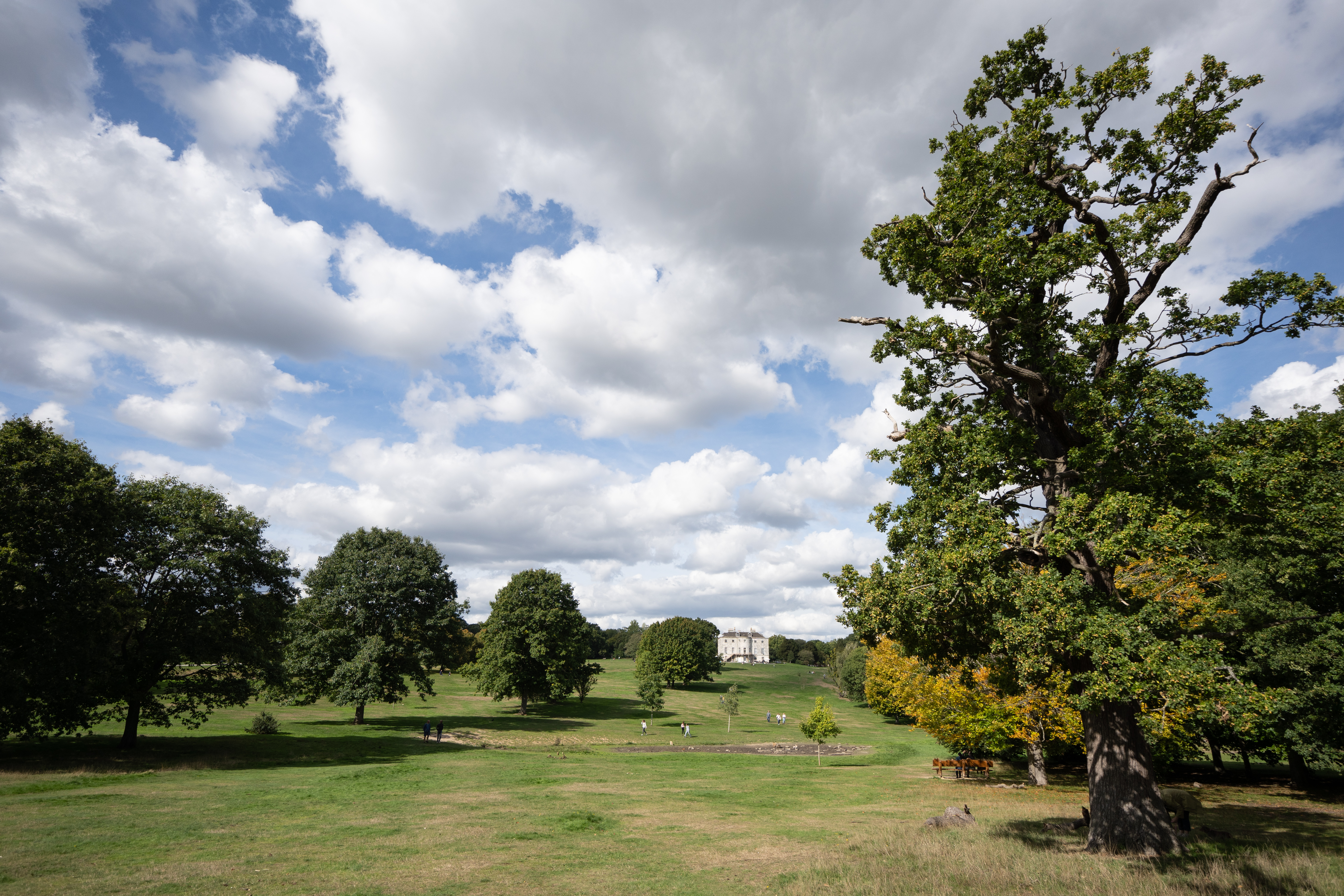
The lens delivers sharp images at all focal lengths, even at f/4. Sony A7R IV, 12mm, 1/1600sec at f/4, ISO 100. Image credit: Andy Westlake
The net result is images that are perfectly geometrically corrected, with plenty of detail from corner to corner, too. For most users, this process will be completely seamless, and they’ll probably never even notice that it’s happening, still less care.

Thanks to the integrated software correction, straight lines are drawn correctly, which is essential when shooting architecture. Sony A6000, 10mm, 1/5000sec at f/7.1, ISO 100. Image credit: Andy Westlake
The practical upshot is that you end up with impressively sharp, clean images at pretty much all focal length and aperture settings. Indeed, comparing test images shot using the Sony Alpha 7R IV’s 26.2MP APS-C crop mode reveals that at f/4, the lens is pretty much as sharp as it will ever get. There’s no discernible difference on stopping down to f/8, but beyond this, diffraction results in a softening of pixel-level fine detail.
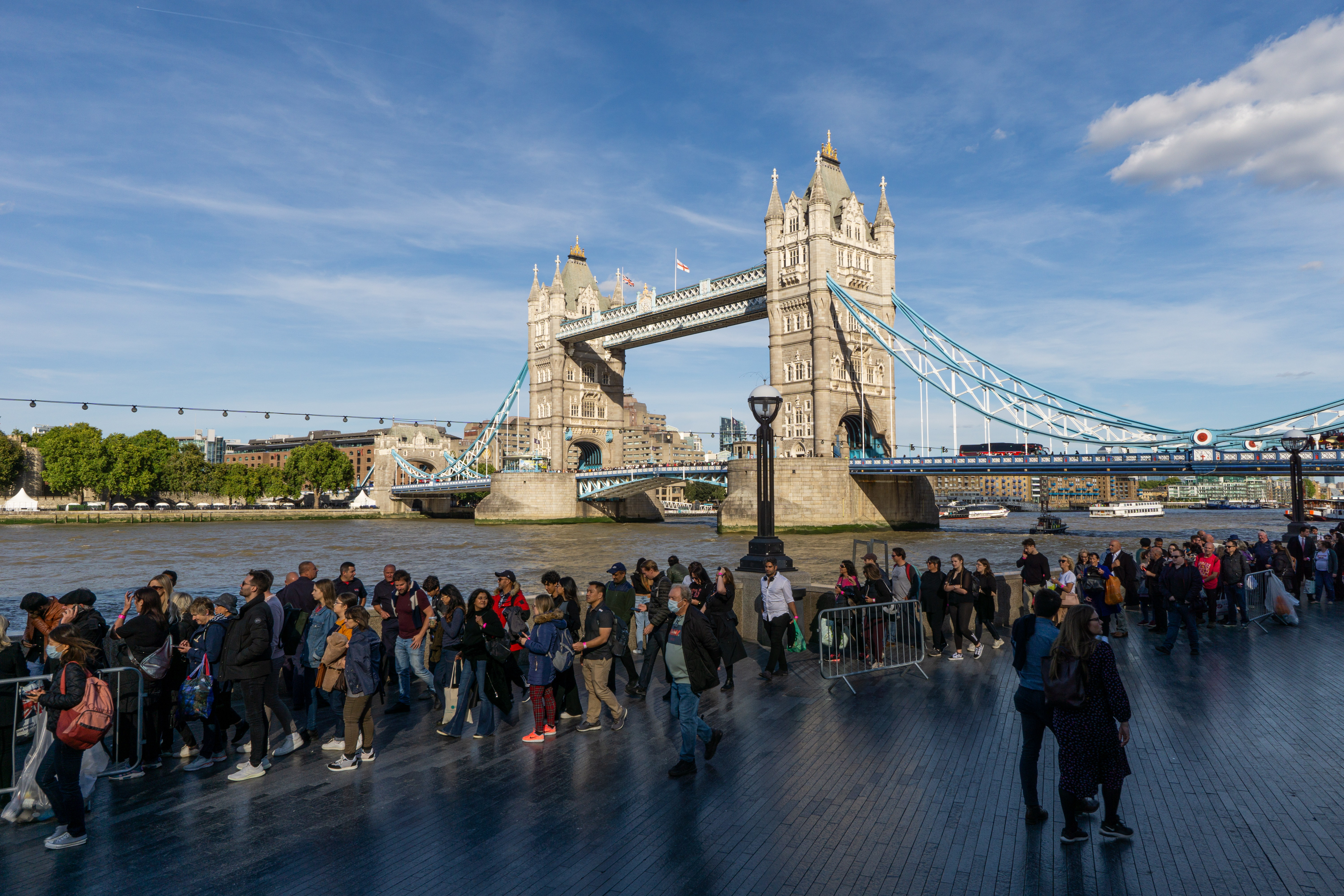
Stop down beyond f/8, and you’ll see progressive softening due to diffraction. Sony A6000, 16mm, 1/2000sec at f/11, ISO 100. Image credit: Andy Westlake
What’s more, the lens is remarkably consistent across its focal length range. There is, perhaps, a little softening towards the corners at the 10mm setting compared to the longer focal lengths, but it’s not going to spoil your images.

Sharpness is maintained at close focus distances. Sony Alpha 7R IV, 10mm, 1/30sec at f/5.6, ISO 160. Image credit: Andy Westlake
As is the modern way, Sony also compensates for vignetting and chromatic aberration in-camera. If you choose to disable the Shading compensation, you’ll see obvious darkening towards the corners of the frame when shooting evenly toned subjects at f/4, but this pretty much goes away at f/5.6. There’s no good reason to disable Chromatic Aberration compensation.

The lens is just as sharp at 20mm as it is at the ultra-wide end. Sony A6000, 20mm, 1/60sec at f/8, ISO 400. Image credit: Andy Westlake
The lens fares well when pointed directly into the sun, which is a desirable characteristic for an ultra-wide zoom. I saw little in the way of problematic flare patterns and minimal loss in contrast. Stop down to f/11 and beyond, and you’ll get increasingly well-defined 14-ray sunstars from the 7-bladed aperture.

The lens deals well with shooting into the light. Sony A6000, 1/800sec at f/4, ISO 100. Image credit: Andy Westlake
Shooting with this lens on the Alpha 6000 did, however, highlight its main drawback, which is the lack of optical stabilisation. As only Sony’s high-end APS-bodies include in-body image stabilisation (such as the Alpha 6500 and Alpha 6600), this means many users will end up with no stabilisation at all. Those recording video on unstabilised bodies, including the ZV-E10 vlogging camera, will need to use a tripod or gimbal.
It can be tempting to think that the lack of stabilisation doesn’t matter so much for stills photography with an ultra-wideangle zoom, but personally I think this is mistaken. Image stabilisation lets you continue to use low ISOs in low light, enabling higher image quality, or experiment with longer shutter speeds for creative motion blur, all without having to set up a tripod. For this reason, I’d recommend that photographers using unstabilised cameras should probably choose the E 18-18mm F4 OSS instead.

For this shot, I exploited the A7R IV’s in-body stabilisation to keep the ISO low. Sony A7R IV, 10mm, 1/4sec at f/8, ISO 100. Image credit: Andy Westlake
For photographers who use square filters, the lens works well with an 85mm system, despite its ultra-wide view. This is a direct benefit of the APS-C format, and means you don’t need a bulky and expensive 100mm setup. Using the Formatt Hitech Firecrest 85mm system, I found that the holder only impinged on the view when it was heavily angled with the lens set to 10mm, which is a pretty niche scenario. Even then, zooming to 11mm eliminated the black corners.
Sony E PZ 10-20mm F4 G: Our Verdict
With the Sony E PZ 10-20mm F4 G bearing such a strong resemblance to the full-frame Sony FE 16-35mm F4 G, it should come as no surprise to find that it comes with a similar balance of pros and cons.
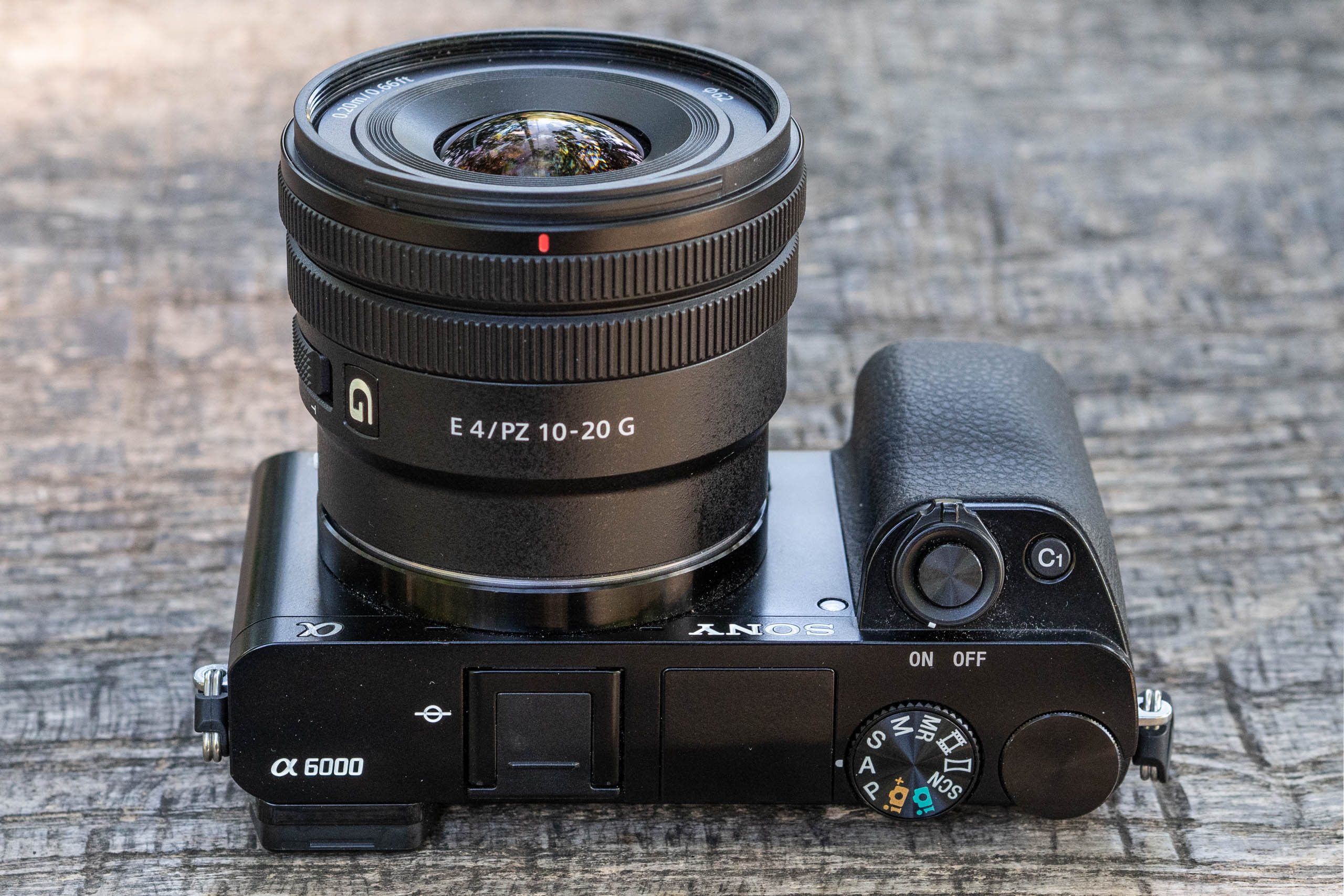
The Sony E PZ 10-20mm F4 G is attractive for both stills and video. Image credit: Andy Westlake / Amateur Photographer
Of course the power zoom design, and all the benefits it brings, make it especially well-suited for video use. Indeed it’s probably the perfect partner to the Sony FX30 cinema camera, and it might just be the best available option for the ZV-E10 vlogging camera too. But don’t make the mistake of thinking that it’s exclusively a video lens, as it has plenty to offer photographers too, thanks to its light weight, excellent sharpness and weather-resistant construction. It could be an excellent choice for landscape photographers looking to pack light, for example.
This lens is, however, best suited to those using the A6500 and A6600 bodies, thanks to their in-body image stabilisation. But it’s not such a great match to lower-end A6000 series models, or other older bodies that lack IBIS. Instead, photographers using these cameras may well be better served by the Sony E 10-18mm F4 OSS, which also has the benefit of being cheaper. But that’s my only real reservation regarding this otherwise excellent optic.

Sony E PZ 10-20mm F4 G: Full Specifications
